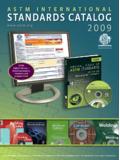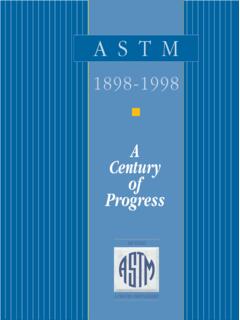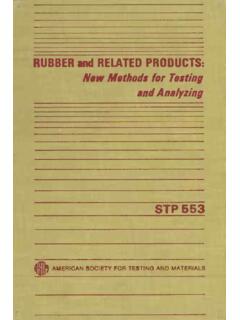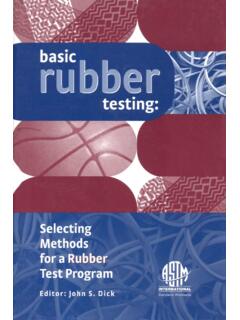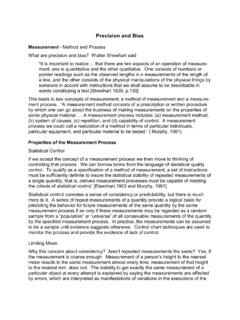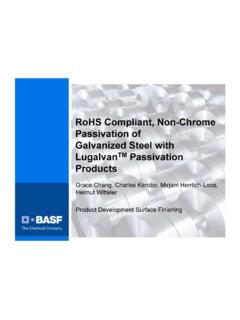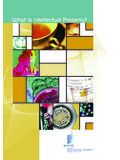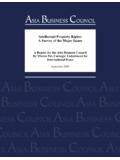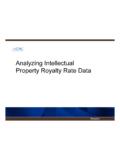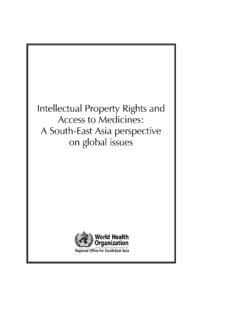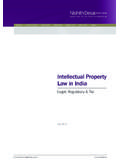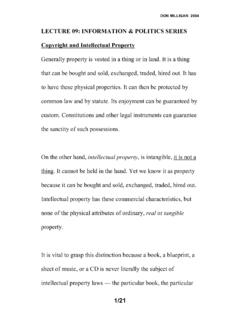Transcription of INTELLECTUAL PROPERTY POLICY OF ASTM …
1 Originally Approved 28 April 1999. INTELLECTUAL PROPERTY POLICY OF ASTM. INTERNATIONAL ( POLICY ). I. INTRODUCTION. Ownership and use of ASTM International's INTELLECTUAL PROPERTY ( Standards, Draft Standards, Adjuncts, Certification Programs and related materials, Technical Papers, Research Reports, Manuals, Software, Training Course Materials and Logos collectively referred to as ASTM IP ) are vital to the ability of ASTM International to fulfill its mission. ASTM International owns and maintains the rights to its INTELLECTUAL PROPERTY ; it is the responsibility of ASTM International's Board of Directors ( Board ), staff, members, and others who participate in the creation of ASTM IP (collectively Participants ), as well as authorized resellers/distributors of ASTM IP, to protect these valuable assets and ensure that they are used in accordance with this POLICY .
2 A. Section 1 of the ASTM International Charter states in part: The corporation is formed for the development of standards on characteristics and performance of materials, products, systems and services; and the promotion of related knowledge. Section 9 of the Charter also states, in part: the Corporation shall not engage in any activity which is not educational, technical, scientific or charitable . B. ASTM International By-law states: The Board shall delegate to such committees and other groups those powers necessary for the fulfillment of their assigned function.. C. ASTM International By-law states: The Board of Directors is empowered to promulgate procedures for the development and adoption of voluntary consensus standards .. D. The Standing Committee on Publications ( COP ) advises the Board on the formulation of publications POLICY .
3 COP is responsible for all publications programs of the Society except the acceptance for publication of ASTM International's standards. E. The Committee on Technical Committee Operations ( COTCO ) is responsible for the Regulations Governing ASTM's Technical Committees ( Regulations ), of which Regulation states: Documents [including standards and provisional standards], technical papers, reports, minutes, letters to the editor, and related materials should be released for publication only through ASTM's headquarters.. F. Regulation requires that the current edition of the manual, Form and Style for ASTM. Standards ( Form & Style ) will be followed in the writing of standards (the Committee on Standards ( COS ) is responsible for Form & Style). Section F of Form & Style sets forth policies and procedures governing, among other matters, reference to patents, trademarks, similar marks, and reference to standards of other organizations, in ASTM International documents.
4 Regulation 15 governs the use or reference to a patent in an ASTM International standard. II. TYPES OF INTELLECTUAL PROPERTY . INTELLECTUAL PROPERTY includes patents, trademarks and copyrights, as defined in various federal and state statutes. A. Patent. A patent is a PROPERTY right granted by the government to inventors of new and useful inventions. Patents may be granted on any new and useful process, machine, manufactured article, composition of matter, or any new and useful improvements thereof. During a patent's limited term, its owner has the right to exclude others from making, using, selling, offering for sale or importing the patented invention into the United States. B. Copyright. A copyright is a PROPERTY right granted to the creators ( authors) of original works that are fixed in a tangible medium of expression and that are independently created and possess some minimal degree of creativity.
5 The exclusive rights provided by a copyright include protection against unauthorized printing, publishing, copying, selling, distributing, and/or performing of the copyrighted work. Copyrighted materials include not only traditional written works but also such things as computer software, electronic files and publications, internet/website files and publications, multimedia, CD-ROMs, DVDs, videotapes, audiotapes, and training programs. C. Trademark. A trademark is a word, phrase, symbol or design, or combination of words, phrases, symbols or designs, which identifies and distinguishes the source of goods or services from one party from those of others. A service mark is the same as a trademark except it identifies and distinguishes the source of a service rather than a product. Trademark rights may be used to prevent others from using a confusingly similar mark but not to prevent others from making the same goods or from selling them under a non-confusing mark.
6 III. PURPOSE OF THIS POLICY . The purpose of this POLICY is to specify and protect the interests of ASTM International in its INTELLECTUAL PROPERTY rights , and to describe the means by which ASTM International has addressed protection of these rights and recognition of the INTELLECTUAL PROPERTY rights of others. ASTM International's INTELLECTUAL PROPERTY rights and revenue generated by utilization of those rights enable ASTM International to carry out its mission. All ASTM International staff, members, and others as stated in , below, are expected to comply with this POLICY . IV. SCOPE. A. This POLICY applies to any ASTM International standard, draft standard or related document (hereinafter referred to as ASTM Documents )defined in Regulation 2 of the Regulations Governing ASTM Technical Committees, and any adjuncts to such ASTM Documents, as well as to all other ASTM International publications and related PROPERTY , in all forms (including CD- ROM, software, multimedia, ASTM Internet Web Site, videotapes, audiotapes) and written materials such as Certification Programs and materials, Special Technical Publications, Manuals, Technical Journals, Proficiency Test Program materials, Professional and Technical Training materials, as well as use of trademarks, service marks, certification marks and Logos (collectively part of ASTM IP).
7 (Many of these, as well as other examples of ASTM IP, are listed in the ASTM International Publications Catalog and related brochures. Logos are specifically covered by the ASTM International Logo POLICY as adopted and amended by the Board.). B. This POLICY applies to all ASTM International employees, members, officers, directors, Participants, resellers/distributors and others involved with the development, adoption, publication, use and/or distribution of ASTM IP. For purposes of this POLICY , committee or technical committee includes subcommittees and task groups. C. Participants, members, and authorized resellers/distributors acknowledge and agree that the adoption, enactment, reference, or incorporation of any of the ASTM IP by any government or agency has not and will not effect, transfer, modify or alter the copyrights of the ASTM IP in any way.
8 V. POLICY . A. All of ASTM International's INTELLECTUAL PROPERTY rights must be protected, regulated and maintained, no matter how wide the information is distributed in print, electronically, or otherwise. Such protection is essential to ASTM International's ability to fulfill its mission and maintain its INTELLECTUAL PROPERTY . The Board of Directors has approved the Principles for the Use of ASTM INTELLECTUAL PROPERTY by Other Standards Organizations. B. ASTM International owns and maintains the rights to its INTELLECTUAL PROPERTY . C. ASTM International reserves the right to copyright any of its print, electronic products, databases, audio/visual products and any other subject matter covered by Copyright (pursuant to the US Copyright Act and International Copyright law). This is intended to protect ASTM. International and its members from unauthorized copying and distribution of ASTM IP.
9 D. By participating in any ASTM International technical committee and/or participating in the creation, development and/or adoption of ASTM IP, Participants and committee members acknowledge that the copyright to such INTELLECTUAL PROPERTY resides in ASTM International. Each member agrees, by such participation and enjoyment of his/her annual membership benefits, to have transferred any and all ownership interest, including copyright, they possess or may posses in the ASTM IP to ASTM. If requested by ASTM International, such Participants and committee members agree to execute any and all documents deemed necessary or appropriate by ASTM. International to transfer and effectuate ownership of all such rights , including but not limited to copyrights, they may possibly have in ASTM IP. The rights granted to ASTM International by this assignment or transfer shall belong to ASTM International in perpetuity.
10 E. All Participants, members and staff agree to abide by and follow the requirements of the ASTM International Charter, ASTM International By-laws, Regulations Governing ASTM. Technical Committees, and Form and Style for ASTM Standards, ASTM International Logo POLICY , as well as this POLICY , as each may be amended from time to time, when creating, developing or utilizing ASTM IP. F. It is ASTM International's POLICY , reflected in Form & Style F5, that the copyrights and other INTELLECTUAL PROPERTY rights of third parties be respected and not infringed by ASTM International or any of its committees, or any employee, member or other person acting on behalf of ASTM. International. G. It is ASTM International POLICY that, if at all possible, proprietary and/or patented equipment, apparatus, material or information not be included in a standard.
